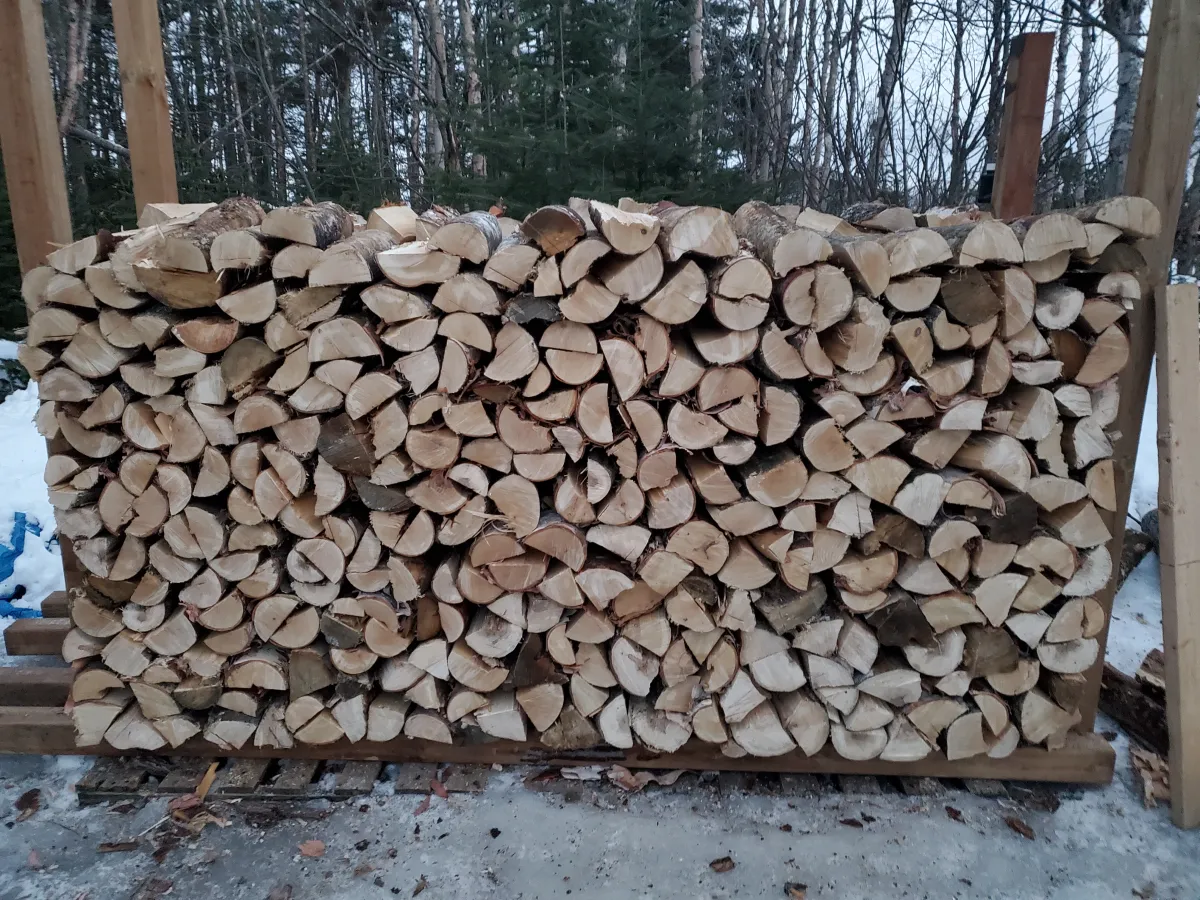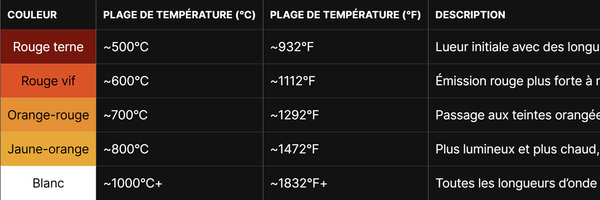Seasoned VS Dry Wood: What's the Difference?


Updated 2025-02-14.
When selecting firewood, understanding the differences between seasoned and dry wood is important for achieving a cleaner, hotter, and more efficient burn. It also is important information as it can give you further insight as to how to store your firewood properly.
Definitions and Basic Differences
Seasoned Wood
Seasoned wood is firewood that has been cut, split, and stored over an extended period. Commonly six months to a year, under conditions that allow moisture to evaporate naturally. This long-term exposure to air reduces the wood’s moisture content to below 20%, enhancing its burning efficiency, reducing creosote formation, and increasing heat energy.
Dry Wood
Dry wood refers to wood that has had its moisture content reduced through various methods, such as kiln-drying or controlled air-drying. Although dry wood can have a similar moisture level to seasoned wood, the process often lacks the prolonged natural aging that affects the wood's long-term moisture resistance and combustion properties.
Scientific Explanation for Moisture Resistance in Seasoned Wood
The enhanced moisture resistance of seasoned wood compared to kiln-dried or partially seasoned wood can be explained by changes at the molecular and structural levels that occur during the long seasoning process.
Molecular-Level Changes
- Oxidation and Chemical Transformation
- Hemicellulose Degradation: Hemicelluloses, which are present in wood, are more hygroscopic than cellulose and lignin. Over time, hemicelluloses partially break down due to oxidation. This degradation reduces the number of hydroxyl (–OH) groups available to bond with water molecules, lowering the wood’s hygroscopicity.
- Resin Oxidation: Natural resins and extractives located near the wood surface oxidize and polymerize during seasoning. This creates a more hydrophobic surface layer that repels moisture.
- Polymer Cross-Linking: Prolonged exposure to air leads to increased cross-linking within the lignin and cellulose matrices. This densification decreases free sites that can bind water, reducing moisture uptake.
- Structural Adaptations
- Reduced Porosity: Extended seasoning can result in microstructural changes such as cell wall stiffening and partial closure of capillary pathways. This limits the pathways through which water can penetrate the wood.
- Stabilization of Microcracks: Microcracks that form during the drying process become less accessible to water as the wood fibers adjust and stabilize, reducing the rate of moisture absorption.
Equilibrium Moisture Content (EMC)
Seasoned wood eventually reaches an Equilibrium Moisture Content (EMC) that aligns with its surrounding environment’s temperature and humidity. At EMC:
- The wood exhibits reduced hygroscopicity because its fibers have adapted to ambient conditions.
- The internal structure becomes relatively stable, leading to a decreased tendency to absorb additional moisture when environmental conditions fluctuate.
According to studies and resources like the USDA Forest Service Wood Handbook and research summarized in scientific literature like Atalla, H. (2008). Wood Chemistry, these molecular and structural changes contribute to the wood’s long-term moisture resistance.
Differences with Kiln-Dried and Partially Seasoned Wood
Kiln-Drying Process:
- Kiln-drying rapidly reduces wood moisture content using controlled heat and humidity. While effective at achieving low moisture levels, this method does not allow the wood to undergo the extensive oxidation, polymer cross-linking, or structural adaptations found in natural seasoning.
- As a result, kiln-dried wood may retain more free hydroxyl groups and open capillaries, making it more prone to reabsorb moisture when environmental humidity changes.
Partially Seasoned Wood:
- Wood that has not fully completed the seasoning process may not have reached its stable equilibrium or undergone full chemical transformations.
- Such wood is still susceptible to moisture uptake due to incomplete hemicellulose degradation, lesser resin oxidation, and a less stabilized microstructure.
Sooo, in a nutshell:
The scientific distinctions between seasoned wood and kiln-dried or partially seasoned wood lie in the extended natural aging process. Seasoned wood undergoes oxidation, polymer cross-linking, and microstructural changes that reduce its hygroscopicity and enhance its resistance to moisture. These processes allow seasoned wood to reach a stable equilibrium with its environment, making it less prone to reabsorbing moisture compared to wood that has not been aged as thoroughly. Understanding these molecular and structural adaptations highlights why seasoned wood is often preferred for firewood, as it offers more consistent burning properties and longevity under varying weather conditions.
If this article interested you, my firewood calculator will probably also interest you 😄





